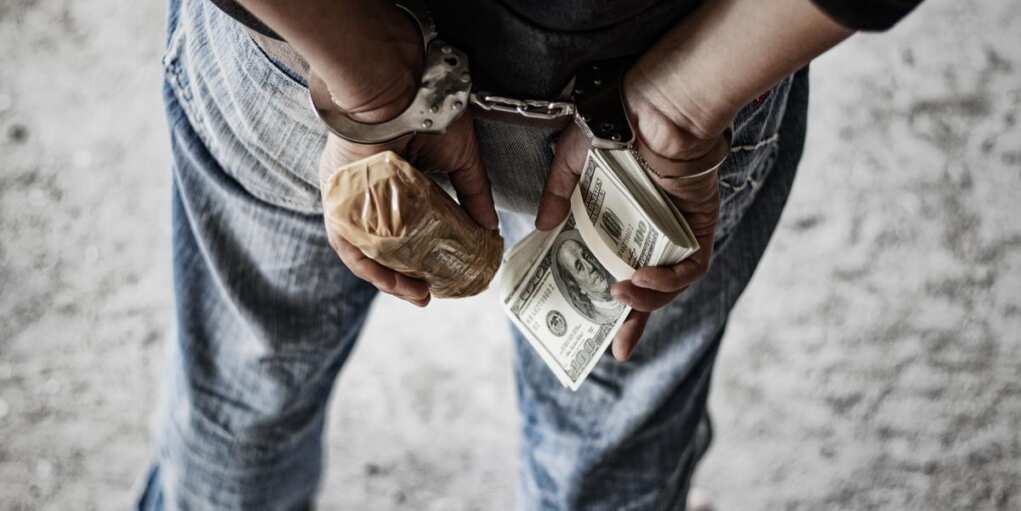ICE Nabs Notorious Cartel Gangster—Hiding In Low-Crime State

A notorious cartel-linked gang member wanted for murder in Mexico was arrested in New Haven, Connecticut—one of the nation’s most well-known sanctuary cities—after entering the U.S. illegally and dodging deportation multiple times.
A ‘Heinous Murderer’ Finds Refuge in New Haven
Federal agents with Immigration and Customs Enforcement (ICE) arrested Orlando Diaz-Cebada, also known as “El Leches,” on June 12. Diaz-Cebada is allegedly a member of Los Pochos, a gang that works closely with the deadly Sinaloa Cartel. He stands accused of killing a Mexican law enforcement officer and had an active arrest warrant issued in Tlaxcala, Mexico, dating back to April 2024.
Assistant DHS Secretary Tricia McLaughlin issued a blistering statement praising ICE for the high-profile arrest: “This heinous murderer attempted to evade justice by hiding out in Connecticut. These are the types of barbaric criminal illegal aliens our brave ICE law enforcement risks their lives every day to arrest.”
Repeatedly Deported—But Still Roaming Free
Diaz-Cebada first crossed into the United States illegally in May 2024 and was immediately deported. Two days later, he re-entered the country and was caught again. Despite these repeat offenses, it remains unclear how he ultimately made his way back into the U.S., undetected and unsanctioned. According to the Department of Homeland Security, he was never “inspected, admitted, or paroled” by any federal authority.
That means somewhere between his last recorded deportation and his June 2025 arrest, Diaz-Cebada managed to slip through the cracks of America’s immigration system yet again—an indictment of both border security lapses and sanctuary policies that hinder enforcement.
Sanctuary Shield: Political Cover for Dangerous Fugitives?
New Haven has long prided itself on being a sanctuary city. Just two months ago, Democratic Mayor Justin Elicker celebrated a legal victory against the Trump administration, which had sought to strip federal funding from jurisdictions that refused to cooperate with immigration enforcement.
“New Haven is a welcoming city,” Elicker declared at the time. “We’re committed to ensuring all our residents feel safe calling the police.” But this policy also made the city a safe haven for a cartel operative who allegedly murdered a cop in Mexico.
Critics argue that these policies do the opposite of promoting public safety. “America is no longer a safe haven for violent criminals,” said McLaughlin. “If you come here and break our laws, we will hunt you down. Criminals are not welcome in the United States.”
Local Authorities Under Fire
New Haven police tried to balance their sanctuary city stance with support for federal law enforcement. “We fully support the efforts of our federal partners in apprehending this individual,” a police department spokesperson told Fox News Digital. “While everyone is entitled to due process, we stand firmly behind actions that protect our communities.”
Still, the arrest raises fresh questions about how many other violent criminals are hiding in sanctuary jurisdictions across the country. If a high-profile fugitive with cartel ties can re-enter the U.S. after being deported twice and hide in plain sight, critics say no city is truly safe.
A Call for Accountability
The case of Orlando Diaz-Cebada isn’t just a story about one arrest—it’s a microcosm of a broken system. While federal agents did their jobs, the policies that allowed Diaz-Cebada to roam free for over a year remain untouched. It’s a wake-up call for lawmakers, law enforcement, and citizens alike.
The Biden-era immigration policy failures and the refusal of sanctuary cities to cooperate with ICE have combined to create a dangerous environment where even accused murderers can find cover. The question isn’t whether it could happen again—but when.
